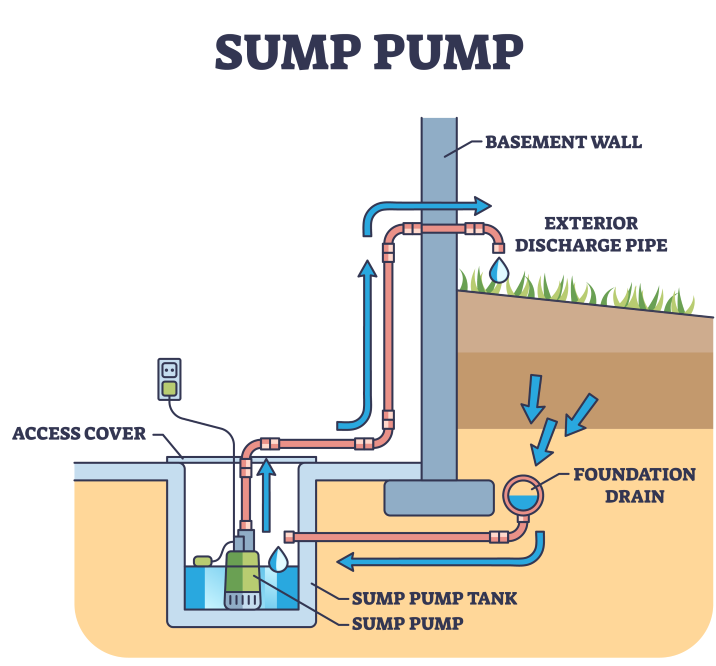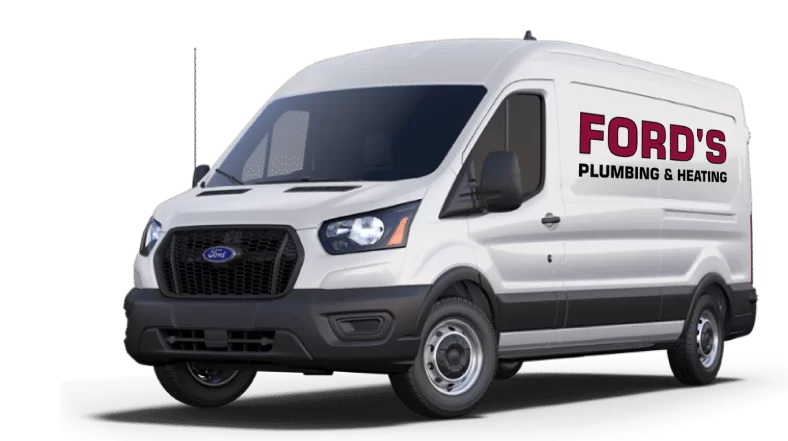Living in Los Angeles, where basements are a rarity, you might wonder if a sump pump is a relevant addition to your home. While basements are uncommon, the threat of water intrusion is ever-present, especially during heavy rains. Below, we’ll take a detailed look at sump pumps, exploring their purpose, components, mechanisms, types, maintenance, and how they play a crucial role in protecting your Los Angeles home from potential flooding.
What Is a Sump Pump and What Is a Sump Pump Used For?
A sump pump is a device designed to prevent water damage in homes. Typically installed in basements or crawl spaces, it removes excess water that accumulates in a sump pit, preventing flooding and potential structural damage.
Activated by a float switch or pressure sensor, the pump automatically engages when water reaches a certain level, pumping it away from the property through a discharge line. Essential in regions prone to heavy rainfall or with high water tables, a sump pump is a reliable safeguard, ensuring a dry and secure environment by mitigating the risk of water-related issues.
What Are the Benefits of a Sump Pump in Los Angeles?
While Los Angeles is not known for year-round heavy rainfall, there are still several benefits to having a sump pump, particularly in areas where water intrusion or flooding can occur. Here are the key benefits of installing a sump pump in Los Angeles:
1. Protection Against Unexpected Heavy Rains
Although Los Angeles experiences a generally arid climate, it is not immune to sudden heavy rains, especially during the fall and winter seasons. A sump pump provides a crucial line of defense against flooding that can result from unexpected downpours.
2. Preventing Water Damage in Low-Lying Areas
Some areas in Los Angeles, even without basements, might have crawl spaces or lower levels where water can accumulate. A sump pump helps prevent water damage by efficiently removing excess water from these spaces.
3. Mitigating the Risk of Foundation Damage
Water accumulation around the foundation of a home can lead to soil erosion and compromise the structural integrity of the foundation. A sump pump helps in preventing such issues by keeping the surrounding area dry.
4. Reducing Humidity Levels
Excess moisture in the air can lead to increased humidity levels inside your home. A sump pump helps reduce humidity by preventing water accumulation, creating a more comfortable and healthier indoor environment.
5. Preventing Mold and Mildew Growth
Standing water and damp conditions provide an ideal environment for mold and mildew growth. By keeping the area dry, a sump pump helps prevent the development of these harmful contaminants, promoting a healthier living environment.
6. Insurance Premium Savings
Some insurance providers offer discounts on homeowners’ insurance premiums for properties equipped with sump pumps. This reflects the proactive steps taken to mitigate water-related risks.
Components of a Sump Pump System and How It Works
1. Sump Pit: Creating a Basin for the Pump
The sump pit, a dug-out basin typically located in the lowest part of your home, collects water that may infiltrate through the foundation or basement walls. It serves as the reservoir where water is gathered for pumping.
2. How Sump Pumps Detect Rising Water Levels
Sump pumps are equipped with a float switch or pressure sensor that activates the pump when water in the sump pit reaches a certain level. This automatic activation ensures swift response to rising water, preventing potential flooding.
3. Pumping Mechanism: Understanding the Pumping Process
When triggered by the rising water level, the pump’s impeller starts rotating, creating a centrifugal force that propels the water out of the sump pit through a discharge pipe.
4. Discharge Line: Directing Water Away from the Property
The discharge line carries the pumped water away from your home to a location where it won’t cause any damage. Proper installation and positioning of this line are crucial for effective water diversion.
Types of Sump Pumps: Submersible vs. Pedestal
1. Submersible Sump Pumps
Placed directly inside the sump pit, submersible pumps are more discreet and quieter. They are ideal for homes with finished basements or limited space, as they remain out of sight.
2. Pedestal Sump Pumps
Positioned above the sump pit, pedestal pumps have the motor and impeller on a pedestal. While they are louder and more visible, they are easier to access for maintenance.
Factors to Consider When Choosing a Sump Pump
1. Power Capacity
Assess the pump’s horsepower and pumping capacity to ensure it can handle the potential water volume in your area.
2. Backup System
Consider a sump pump with a reliable backup system, especially in areas prone to power outages or heavy storms.
3. Durability and Material
Opt for a pump made from corrosion-resistant materials, as it will be in constant contact with water.
4. Check Valve
A check valve on the discharge line prevents pumped water from flowing back into the sump pit, ensuring efficient operation.
Maintenance and Care for Sump Pumps
1. Regular Inspections
Periodically check the sump pit and pump for debris and ensure that the float switch moves freely.
2. Testing the Pump
Pour water into the sump pit to activate the pump and confirm that it starts and stops as expected.
3. Cleaning and Lubrication
Clean the pump’s inlet screen and impeller to prevent clogs, and lubricate any moving parts according to the manufacturer’s recommendations.
Common Issues and Troubleshooting
1. Stuck Float Switch
If the float switch becomes stuck, the pump may not activate. Ensure it moves freely and isn’t hindered by debris.
2. Clogged Impeller
A clogged impeller can reduce pumping efficiency. Regularly clean the impeller and surrounding area to prevent debris buildup.
3. Check Valve Failure
A malfunctioning check valve can allow water to flow back into the sump pit. Replace the check valve if necessary.
Sump Pump Backup Systems: Ensuring Reliability
1. Battery-Powered Backup
A battery-powered backup system ensures your sump pump continues to function during power outages.
2. Water-Powered Backup
Using city water pressure, these backups kick in when the primary pump fails, providing an alternative power source.
Protecting Your Home from Flooding with a Sump Pump
In Los Angeles, where heavy rains from atmospheric rivers can lead to unexpected flooding, a sump pump acts as a silent guardian, ready to thwart potential water damage. Its effectiveness lies not only in its installation but also in regular maintenance and understanding its capabilities.
Investing in a reliable sump pump and adhering to a routine maintenance schedule will help safeguard your home against unforeseen water intrusions. Whether you choose a submersible or pedestal pump, the goal is the same: to ensure that when the rains come, your sump pump stands ready to protect your home from potential flooding, even in a city where basements are a rare sight.
Contact Ford’s Plumbing and Heating if you would like to install a sump pump to help prevent flooding in your home, or if you require maintenance or repairs for your existing sump pump.



















